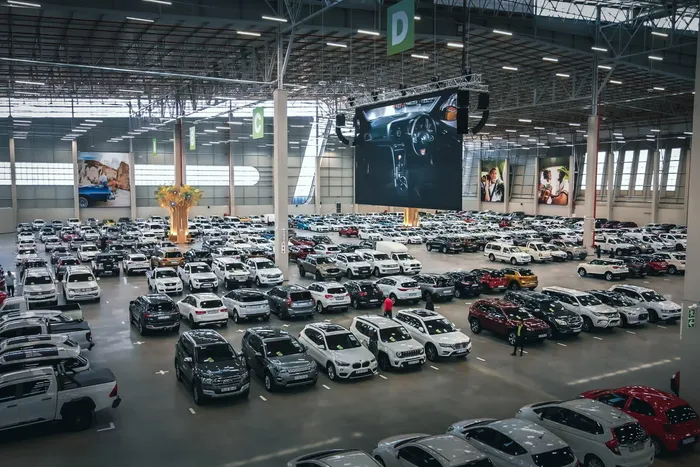Absa economist warns of strain on SA auto industry amid tariffs and shifting market trends
AUTOMOTIVE

Jeff Gable – Head of FIC Research at Absa CIB at Naamsa autoweek IN Gqeberha on Wednesday said that the automotive industry is a sector under strain but focused on success.
Image: Supplied
The South African automotive industry faces a tough operating environment but remains focused on long-term success, Jeff Gable, Head of FIC Research at Absa CIB, told delegates at Naamsa Auto Week in Gqeberha this week.
Gable said shifting consumer preferences are reshaping the domestic market.
“Households also continue to turn towards SUVs, and so local production of these vehicles has been strong, whilst sedan sales are under a lot of pressure,” Gable said.
In the new energy segment, Gable said mild hybrids have gained traction with local buyers due to affordable price points, while full electric and plug-in hybrid vehicles remain out of reach for most consumers.
On the manufacturing side, Gable warned that South African Original Equipment Manufacturers (OEMs) face mounting challenges.
“For those SA firms that face off to the US for some of the export market, it’s clear that the Trump administration has a focus on bringing auto-sector jobs back to America,” he said.
“By definition that’s going to have a cost for everyone else. This is an issue for the full supply chain for OEMs as any volumes lost have a knock-on impact on upstream suppliers, volume efficiencies and more.”
He identified three structural challenges: adapting to the global shift towards new energy vehicles, managing growing competition from Chinese and Indian imports, and navigating South Africa’s exposure to tariff barriers in the US.
“For a third broad challenge, there is how best to manage the huge push from Chinese (and Indian) products into our market. What’s in our favour? 100+ years of automotive production excellence for one. Improvements in logistics infrastructure for another,” Gable said.
“Ultimately the continent’s focus on opening intra-African trade via the African Continental Free Trade Area should provide more competitive access for our vehicle supply chain to build volumes.”
The effects of tariffs are already visible. Between April and July, South Africa’s vehicle exports to the US plunged by nearly two-thirds compared with a year earlier, while exports of aluminium, iron and steel fell by about 25%. Agricultural exports initially benefited from lower tariffs but have since come under pressure after duties were raised to 30% in August.
“But it’s also important to remember that these sorts of exercises are very top-down, and the aggregated data can hide pain at the company level. And it’s that pain that risks SA jobs and livelihoods,” he said.
“Away from trade today, the broad uncertainty that SA’s economic relations with the US now face will almost certainly shape the sorts of long-term investment decisions that will drive South Africa’s economic growth and job creation in the periods ahead. And on that side it is just too early to say how deep the impact will be with any certainty.”
Despite the challenges, he said some resilience is evident. Vehicle sales data point to steady consumer demand in certain segments, Sars revenue collections look encouraging, and rising precious metals prices combined with modest oil prices could provide South Africa with some relief.
However, Gable cautioned that the overall economic outlook remains volatile.
“Less clear is the early evidence of the impact of the tariffs by the US, with some sectors like auto exports being hit in quite a negative way, whilst some other categories, thus far at least, showing little strain.”
BUSINESS REPORT